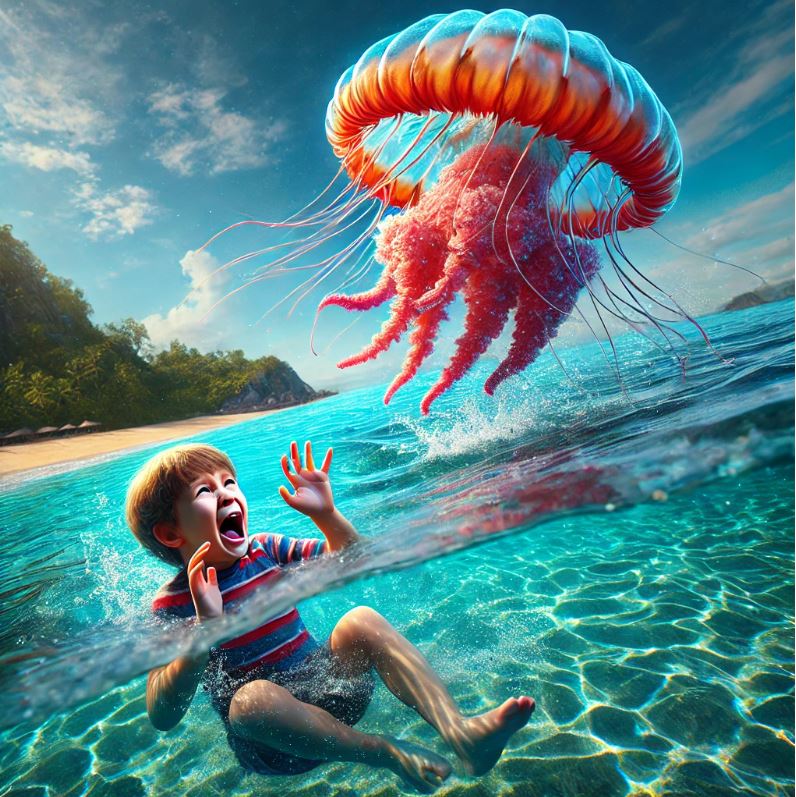Share this post
How to Treat Jellyfish Stings in Key West with Dr. Jason Pirozzolo
If you’re planning a trip to the beautiful beaches of Key West, there’s one thing you should keep in mind beyond sunscreen and flip-flops—the possibility of encountering a jellyfish. As a frequent visitor to Florida’s pristine coastlines, Dr. Jason Pirozzolo, a board-certified physician with expertise in urgent care, has seen his fair share of jellyfish sting cases. “Jellyfish stings are common in tropical waters like Key West,” he explains, especially during warmer months when beachgoers and marine life share the water. This article will walk you through everything you need to know about jellyfish stings, from prevention to treatment, ensuring your Key West vacation remains memorable for the right reasons.
Jellyfish stings occur when swimmers accidentally come into contact with a jellyfish’s tentacles, which contain specialized cells called nematocysts. These cells release venom as a defense mechanism, leading to a range of symptoms that can vary based on the species of jellyfish and individual sensitivity. Key West waters are home to several types of jellyfish, but the most commonly encountered species include the moon jellyfish, cannonball jellyfish, and the Portuguese man o’ war.
“The severity of the sting largely depends on the species,” notes Dr. Jason Pirozzolo, adding that while most stings result in mild irritation, some can cause more serious reactions requiring immediate medical attention. Understanding the risk factors and symptoms can help visitors determine when it’s necessary to seek care at a Key West urgent care facility.
Why are jellyfish stings so common in Key West? The warm, shallow waters surrounding the island create an ideal environment for these marine creatures. Activities like snorkeling, diving, and paddleboarding increase your risk of contact with jellyfish. Additionally, tides can wash jellyfish close to shore, where unsuspecting swimmers may brush against their tentacles. “It’s not uncommon for beachgoers to step on jellyfish that have washed up on the sand,” Dr. Pirozzolo warns, emphasizing the importance of wearing protective footwear.
So, what exactly happens when you’re stung? Typical symptoms include burning pain, redness, and swelling at the site of the sting. More severe cases may present with systemic symptoms like nausea, difficulty breathing, and muscle spasms. “Red flags to watch out for include severe pain that doesn’t subside, signs of an allergic reaction, or stings that cover a large portion of the body,” says Dr. Pirozzolo. If you or someone you’re with experiences these symptoms, it’s crucial to visit a nearby urgent care clinic.
Diagnosis of a jellyfish sting is usually straightforward. Healthcare providers at Key West Urgent Care will assess the affected area, inquire about your recent activities, and evaluate the severity of your symptoms. In some cases, they may perform tests to rule out secondary infections. “Prompt diagnosis helps ensure effective treatment, minimizing discomfort and preventing complications,” explains Dr. Jason Pirozzolo.
Treatment for jellyfish stings begins with basic first aid. Rinse the affected area with seawater (not freshwater) to remove any tentacle remnants. Applying vinegar can help neutralize the venom, particularly in stings from the Portuguese man o’ war. Dr. Pirozzolo advises against common myths like urinating on the sting, stating, “There’s no evidence supporting its effectiveness, and it may even worsen the situation.” Over-the-counter pain relievers and antihistamines can help manage pain and itching. In more severe cases, providers may administer topical steroids or prescribe medications for pain relief.
While treatment is essential, prevention is always better. Dr. Pirozzolo recommends wearing a protective rash guard when swimming or snorkeling and paying attention to local beach warnings. Many beaches in Key West post jellyfish advisories when sightings are high. “Simple precautions can go a long way in keeping you safe,” he emphasizes.
If you’re wondering whether jellyfish stings have long-term effects, the good news is that most stings resolve without complications. However, severe stings or allergic reactions can occasionally lead to scarring or post-inflammatory hyperpigmentation. Dr. Pirozzolo reassures patients that with proper care, serious complications are rare but advises individuals to monitor the sting site for signs of infection, such as increased redness, swelling, or discharge.
For those who prefer to be well-prepared, carrying a small first aid kit with vinegar, antihistamines, and hydrocortisone cream can be a game-changer. Dr. Pirozzolo concludes with practical advice: “Knowing how to respond to a sting can make a world of difference in your experience.” Whether you’re a seasoned diver or a first-time visitor, staying informed is key to enjoying all that Key West has to offer.
If you have any lingering questions, check out these frequently asked questions about jellyfish stings:
FAQs
Can I swim safely in Key West despite the risk of jellyfish? – Yes, but always check local advisories and wear protective gear.
Are jellyfish stings contagious? – No, but touching the sting site can transfer venom to other areas.
Is it true that all jellyfish stings require medical attention? – Not necessarily. Mild stings can be managed with first aid, but severe symptoms warrant urgent care.
What should I do if I don’t have vinegar on hand? – Rinse with seawater and avoid rubbing the area.
Can children and pregnant women be more at risk? – Yes, they may be more susceptible to severe reactions, so prompt care is advised.
For further reading, trusted sources like the CDC and Florida Department of Health offer detailed guidelines on marine stings. Remember, this article is for informational purposes only and does not replace professional medical advice. If you’re in Key West and experience a sting, don’t hesitate to visit a local urgent care clinic.
Stay safe, and enjoy the stunning waters of Key West. Follow Dr. Jason Pirozzolo for more health insights and updates on keeping you and your family well during your coastal adventures.




















